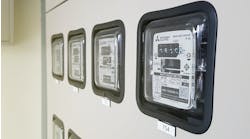How the mining industry is making use of data to glean insights
By Thor Kallestad, CEO of DataCloud
Mine sites are swimming in data yet starving for insights that will make dramatic improvements on their operations. Tapping into their siloed datasets will tap into more efficient ways to extract resources.
DataCloud's Thor Kallestad
Many mining decision-makers have made strides into Industry 4.0 by installing digital measuring tools throughout production. Sites have sensors on all kinds of equipment to monitor all kinds of behavior during each stage; from drilling, to explosives loading, to hauling rock, to processing the rock. Yet, there is often no central database analyzing all of this data.
Small steps toward digitization are necessary, but if the data collected goes to another silo and sits semi-processed, it creates a mass amount of missed opportunities for improvement.
Optimization with this data happens when software integrates those data sets and breaks the silos to:
- Reconcile incoming data with historical data to continuously update the geological models used for making decisions
- Cross-analyze data from all stages during production to learn how the rock behaved (versus predicted behavior) to identify best practices
- Create a digital twin of production to learn geological trends for better predictions of planning, blasting, hauling, blending and crushing,
- Share knowledge with all teams for easy collaboration and a single source of geology truth
A non-disruptive approach to revolutionize the mining industry’s untapped data streams
Even before COVID-19, sending personnel to a mine site had its hurdles. Allowing a vendor on-site at a mine to enable new data points poses safety risks and disruption in schedules. It can be faster to take a look at current data streams for answers. Chances are, the site already has many ways of measuring—drive behavior, explosive use, how rock was moved during blasting, fleet management for where the rock was taken at what time, assay results, and how materials performed during processing.
A mine site’s workflow is complex. To ease disruption teams should start by processing the data they are already collecting. The answers they seek could be buried in those data stockpiles. If this data is cleaned up and analyzed with algorithms inside a cloud-based software, it can then be integrated for insights on how their geology is behaving across all stages. This information can be shared to all teams with a simple browser login, enabling each stage to benefit from the results of the last.
If the digital measuring tools are not showing the answers teams are after, they can add new sensors. Doing the data survey first allows sites to know what they are missing and where they could most benefit based on their workflow, specific needs and pain points.
The real-time advantage of visualizing geology
Making decisions from geological models that are updated with incoming data from of ever-changing geology is a significant advantage to operations. The deeper that mining companies extract, the more the geology changes. Their decisions similarly change based on how to extract and process those rocks. With cloud computing and browser-based software, the ability to update models is easily obtainable, a significant bump in the status quo of updating it every two weeks.
When managers, engineers and geologists can sign into a single source of geology, they will spend less time reporting and explaining and more time understanding and solving. If they can quickly visualize their orebodies, they can quickly identify faults, hard zones, voids, and other prudent geology intel.
Rather than trying to find patterns in endless rows of excel sheets before and after each stage, mine operators can click through a 3D mapping of their geology’s properties and see all the information needed at each stage.
And once all the data is centrally integrated and analyzed, a digital twin can be created for a mine site’s operations, enabling the mine to move from merely recording data digitally to making actual decisions based on data’s insights.






